先端研究機器
Division of Environmental Dynamics
High-Performance Computer (HPC) system
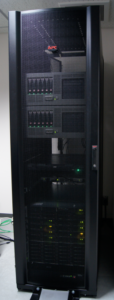 |
HPC is a computer that has many CPU cores more than 100 for calculating the numerical models such as ocean general circulation model, ecosystem-biogeochemical model or regional climate model. |
Mooring Acoustic Doppler Current Profiler (ADCP) system
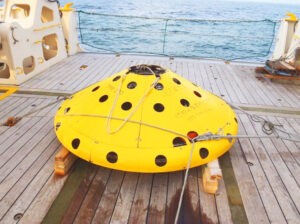 |
This is a mooring ADCP system at the bottom of ocean. ADCP is an acoustic current meter that measures water current velocities from the surface to the bottom within the water column using the Doppler effect of sound waves scattered back from the suspended particles. |
Germanium gamma-ray detector
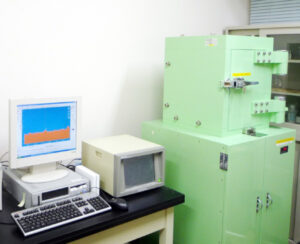 |
Germanium detector equipped with a multichannel analyzer can measure radioactivity of a variety of radionuclide. It is used for age determination of sediment layers by using “Pb-210” method. |
Remotely Operated underwater Vehicle (ROV)
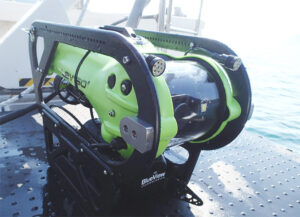 |
ROV is a remote control underwater vehicle that captures not only the optical image but also the acoustic image using the 2D imaging sonar under the low transparency conditions, and it can take the underwater samples such as the seaweed using the manipulator. |
Division of Environmental Chemistry and Ecotoxicology
GCxGC–TOFMS (JEOL Accu TOF)
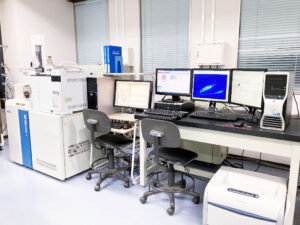 |
GCxGC–TOFMS is an advanced analytical instrument allowing comprehensive detection of known/unknown organic pollutants in environmental and biological samples. Molecular formulas and chemical structures of unidentified compounds can be estimated by analyzing their two-dimensional (GCxGC) chromatograms and accurate mass spectra. |
LC–qTOF–MS (SCIEX X500R)
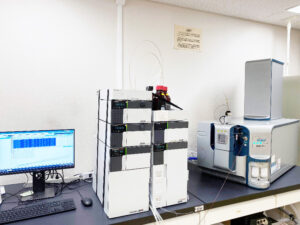 |
LC–qTOF is an excellent analytical instrument that enables comprehensive detection of known/unknown polar organic compounds (ex. PPCPs and metabolomes) in environmental and biological samples. The LC–qTOF-advanced quantitation with higher sensitivity and performance, from low mass to high mass compounds, in positive or negative polarity. |
Real-time PCR System StepOnePlus (Applied Biosystems)
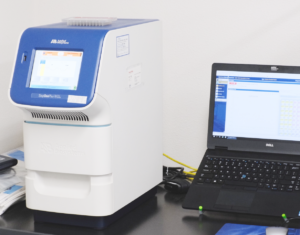 |
The real-time PCR system is an instrument that can perform absolute quantification, relative quantification, and SNP (single nucleotide polymorphism) analyses for DNA and RNA. By using this system, the expression levels of genes affected by chemical exposure can be quantified with high accuracy. |
All-in-One Fluorescence Microscope BZ-X800 (Keyence)
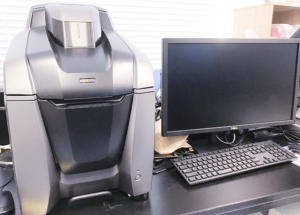 |
The All-in-One Fluorescence Microscope is an instrument with high-precision quantification functions for a variety of biological samples. This system enables high-resolution imaging of tissue sections, 3D-localization of proteins, automatic analysis of cells in well plates, and tracking of cells over time. |
Division of Ecosystem Health sciences
Mosquito vector rearing and blood feeding system
 |
Mosquito vector rearing and blood feeding system allows us to maintain mosquito vectors such as Aedes mosquitoes in the laboratory. Mosquitoes are reared in an incubator that can control temperature, humidity and light. It is necessary to produce the eggs to maintain the mosquito colony. For that, the mosquitoes need blood. The artificial membrane feeding equipment enables the efficient blood feeding of mosquitoes by warming blood in the membrane imitating animal skins. |
Microinjector
 |
This microinjector can inject liquid samples in nanoliter volume with accurate control. It enables injecting small volume samples into embryos, tissues and insects with proper needles (material/shape). In the CMES, we mainly use the injector for injecting mosquito vectors with viruses and dsRNAs. |
Grating Microplate Reader
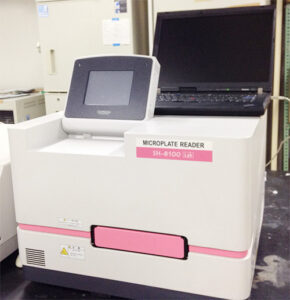 |
(CORONA Electric, SH-8100Lab) The microplate reader can measure fluorescence and absorbance at any wavelength (fluorescence: 200~900 nm, absorbance: 200~1000 nm) in 6 to 384-well multi-well plates. 2 excitations/2 fluorescences measurement, excitation/fluorescence spectrum measurement and absorption spectrum measurement are also available. |
Ehime University – De La Salle University International Collaborative Research Laboratory in the Philippines
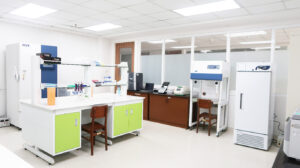 |
This is an overseas facility set up in Metro Manila where basic genetic analysis and sample cryopreservation can be done on-site. The laboratory is equipped with two laboratory benches with sinks, a safety cabinet, a draft chamber, a PCR thermal cycler, a gel imaging system, a freezer, a deep freezer, a nanodrop (ultra-trace spectrophotometer), a centrifuge, and a high-pressure steam sterilizer. In addition, local researchers are also stationed at the facility. |

